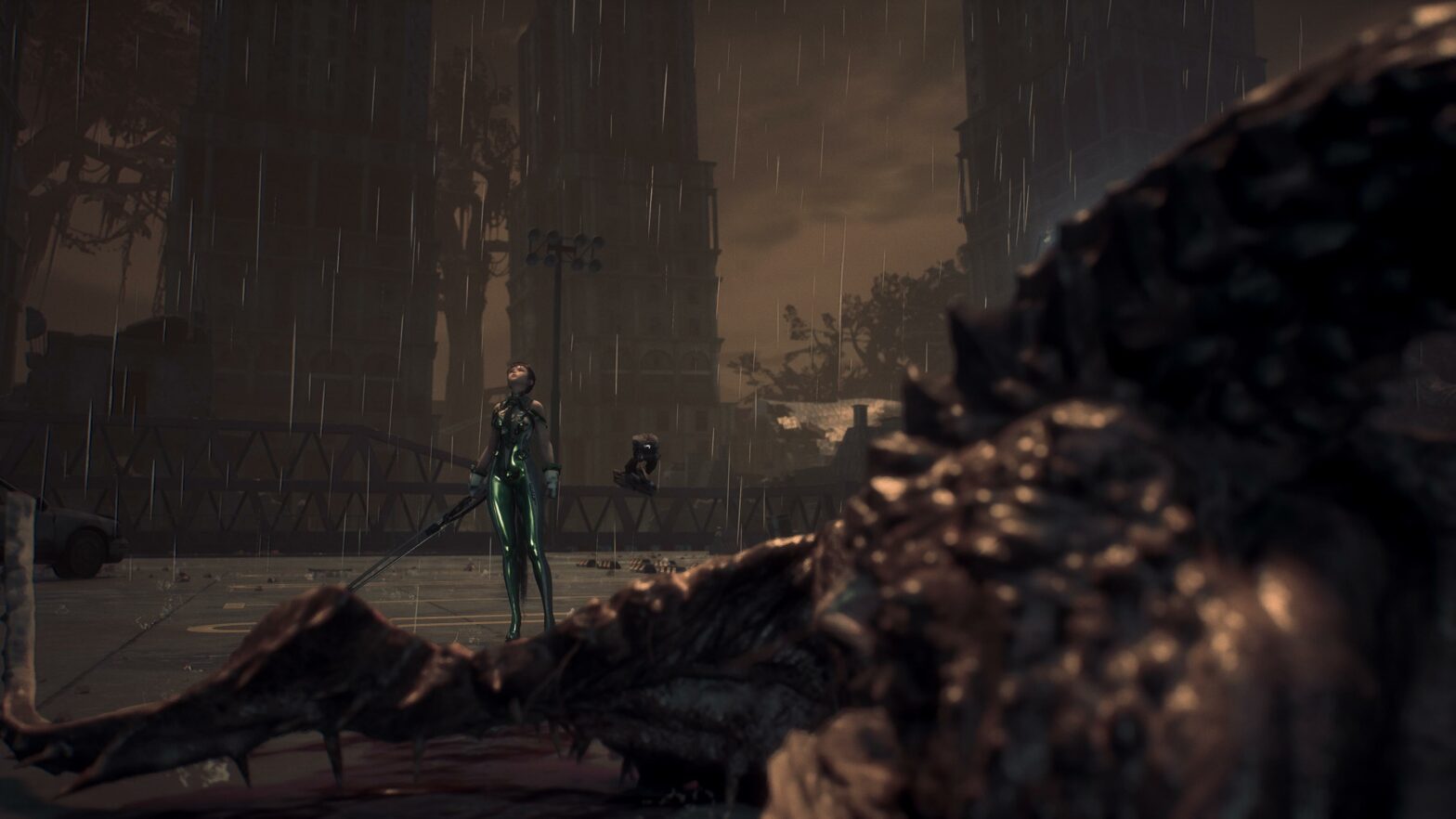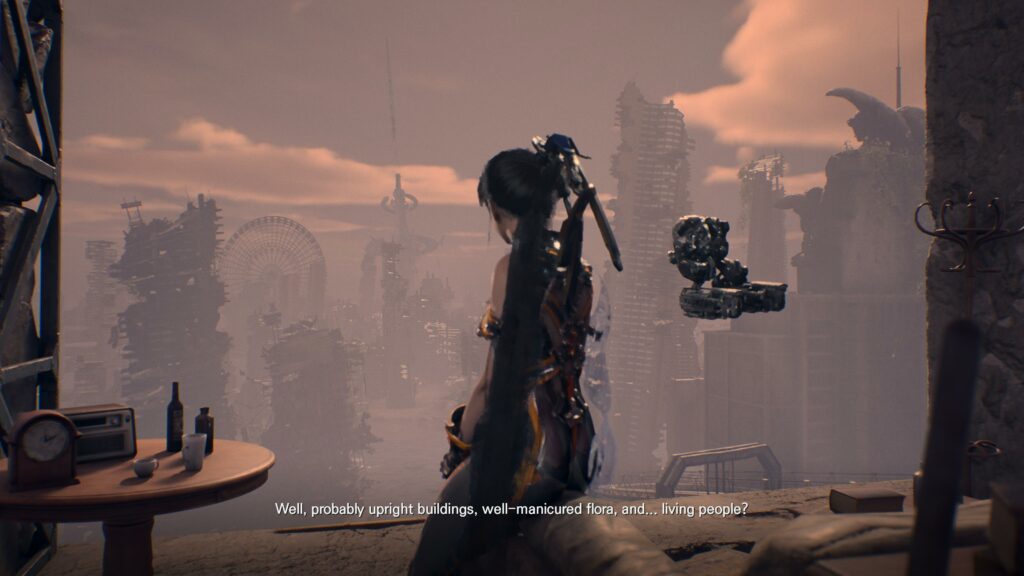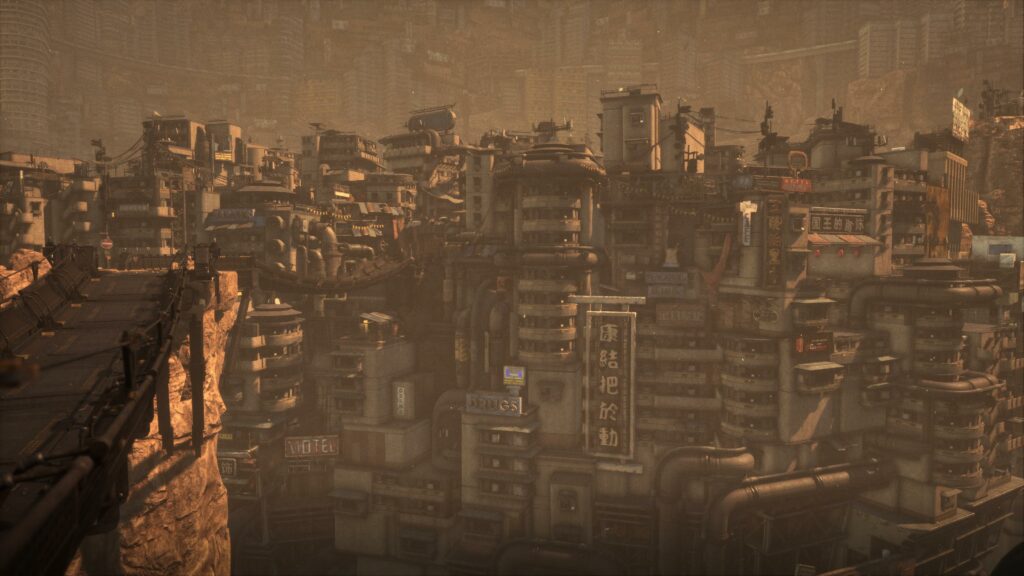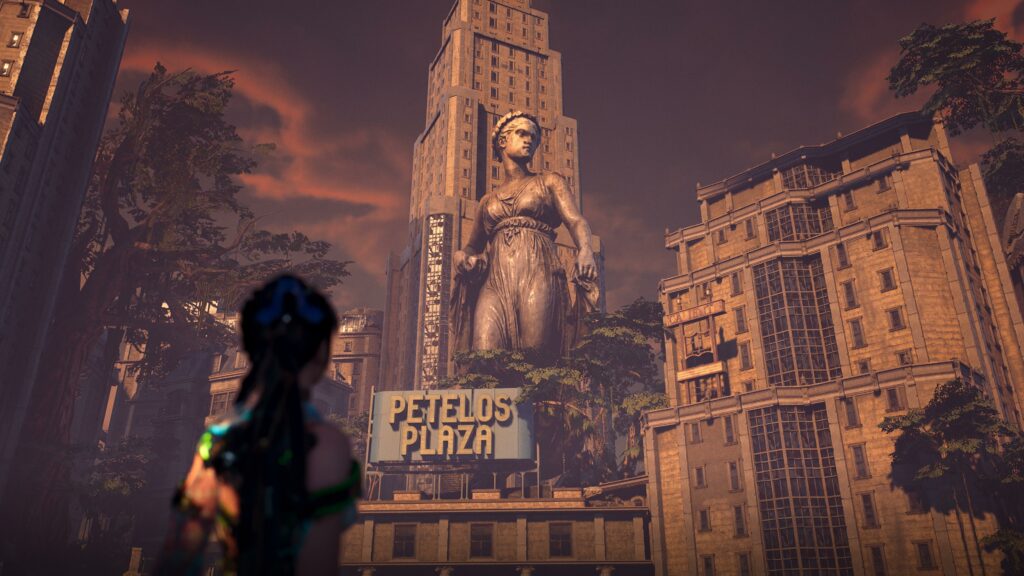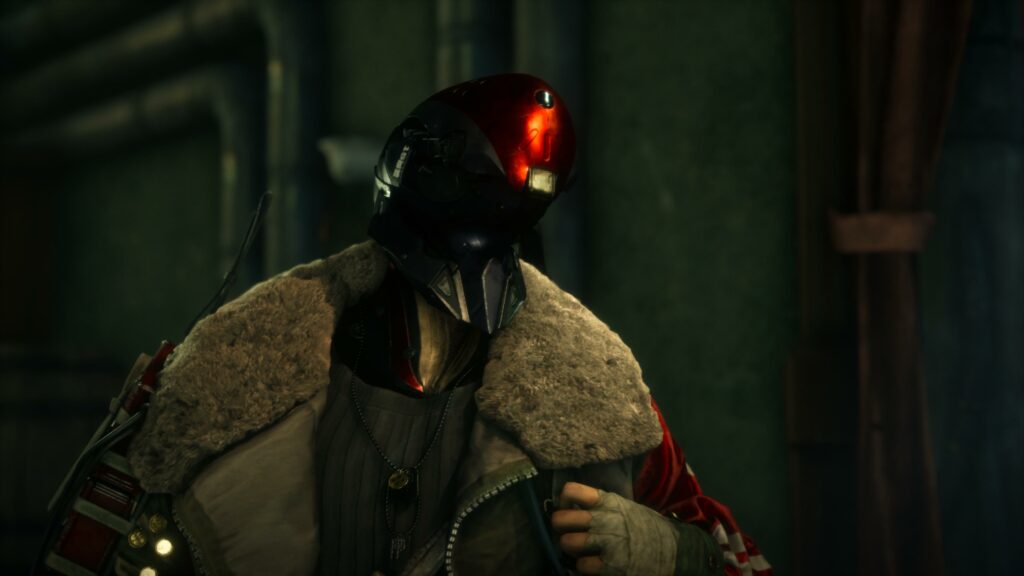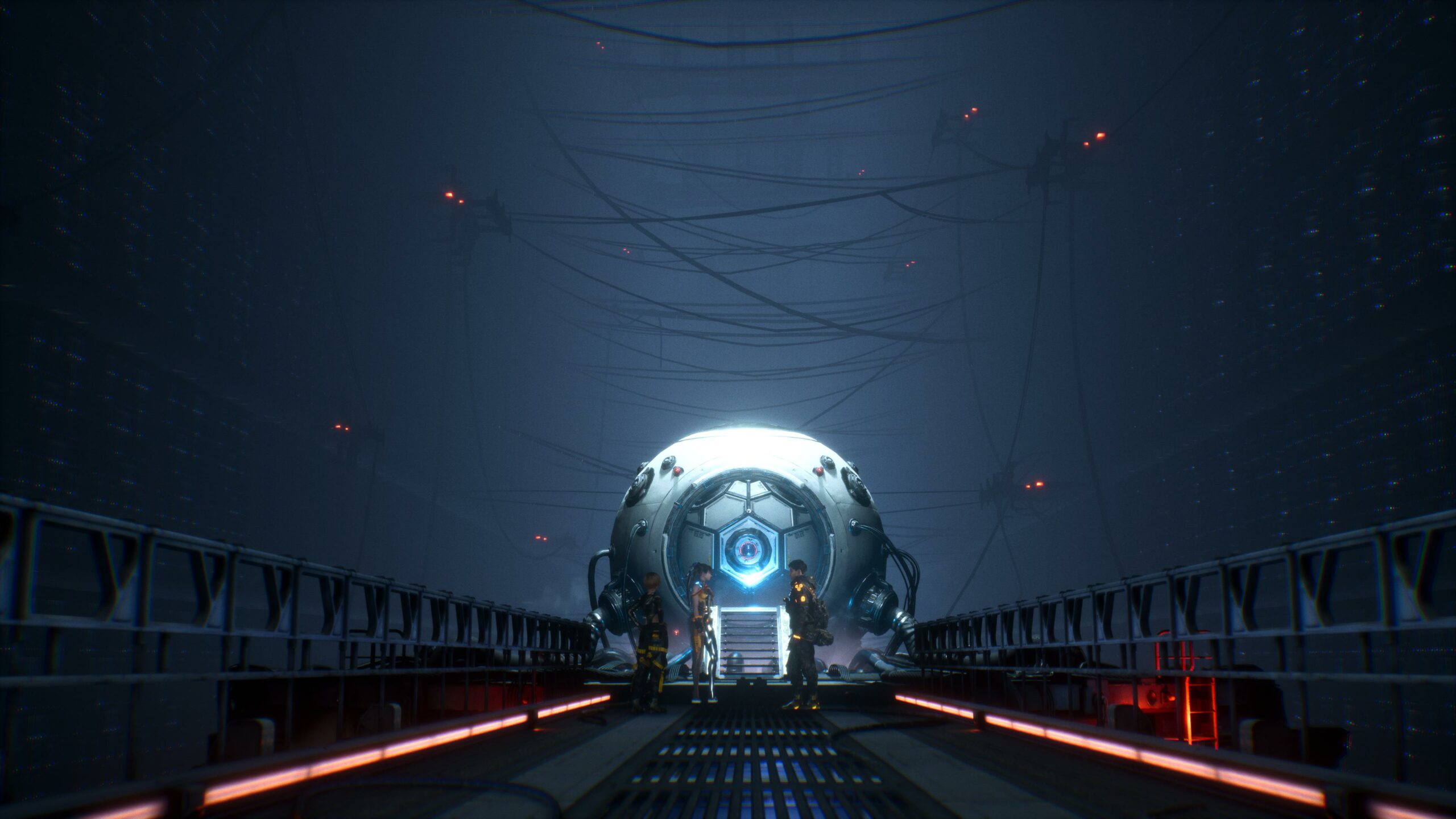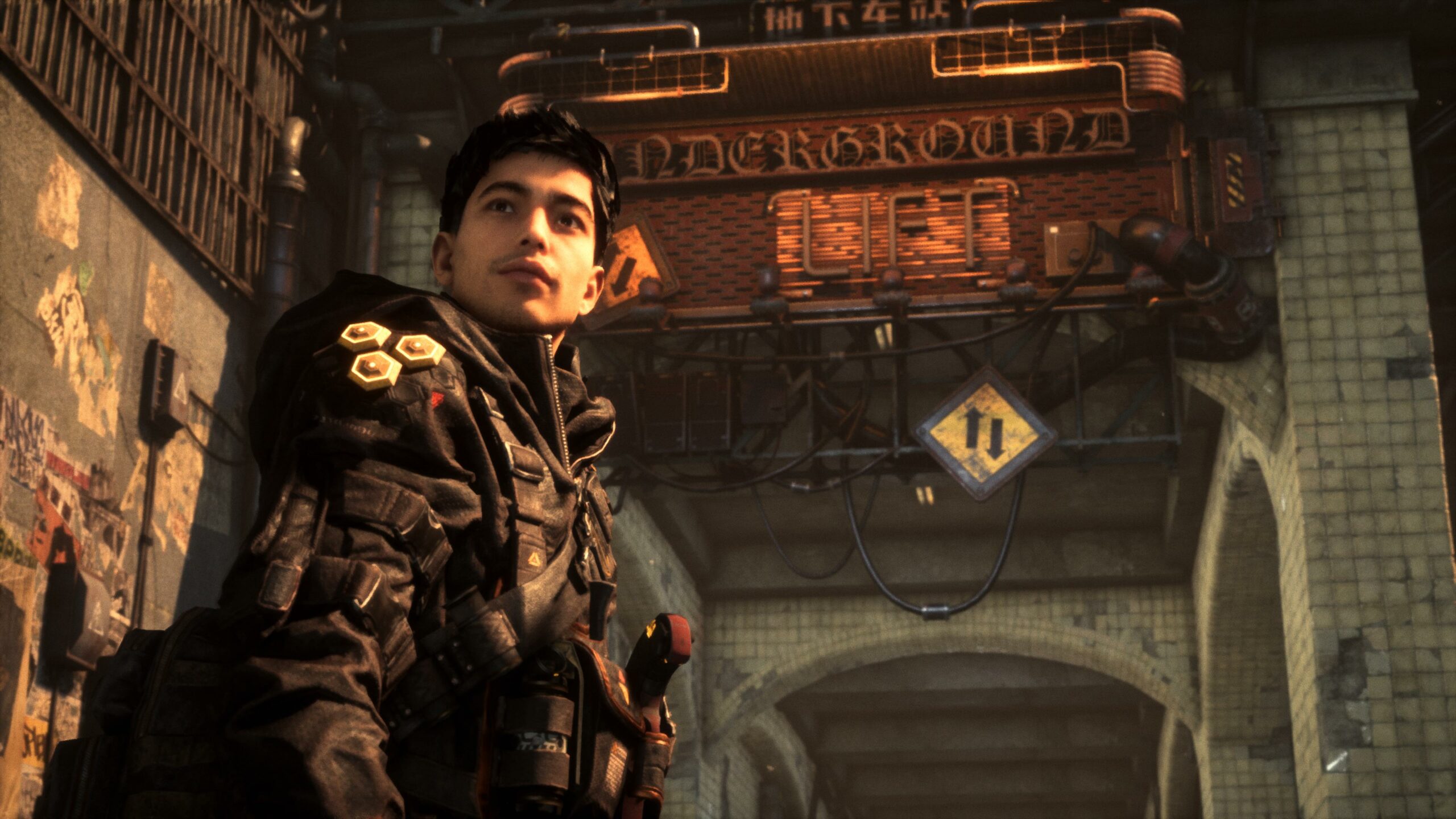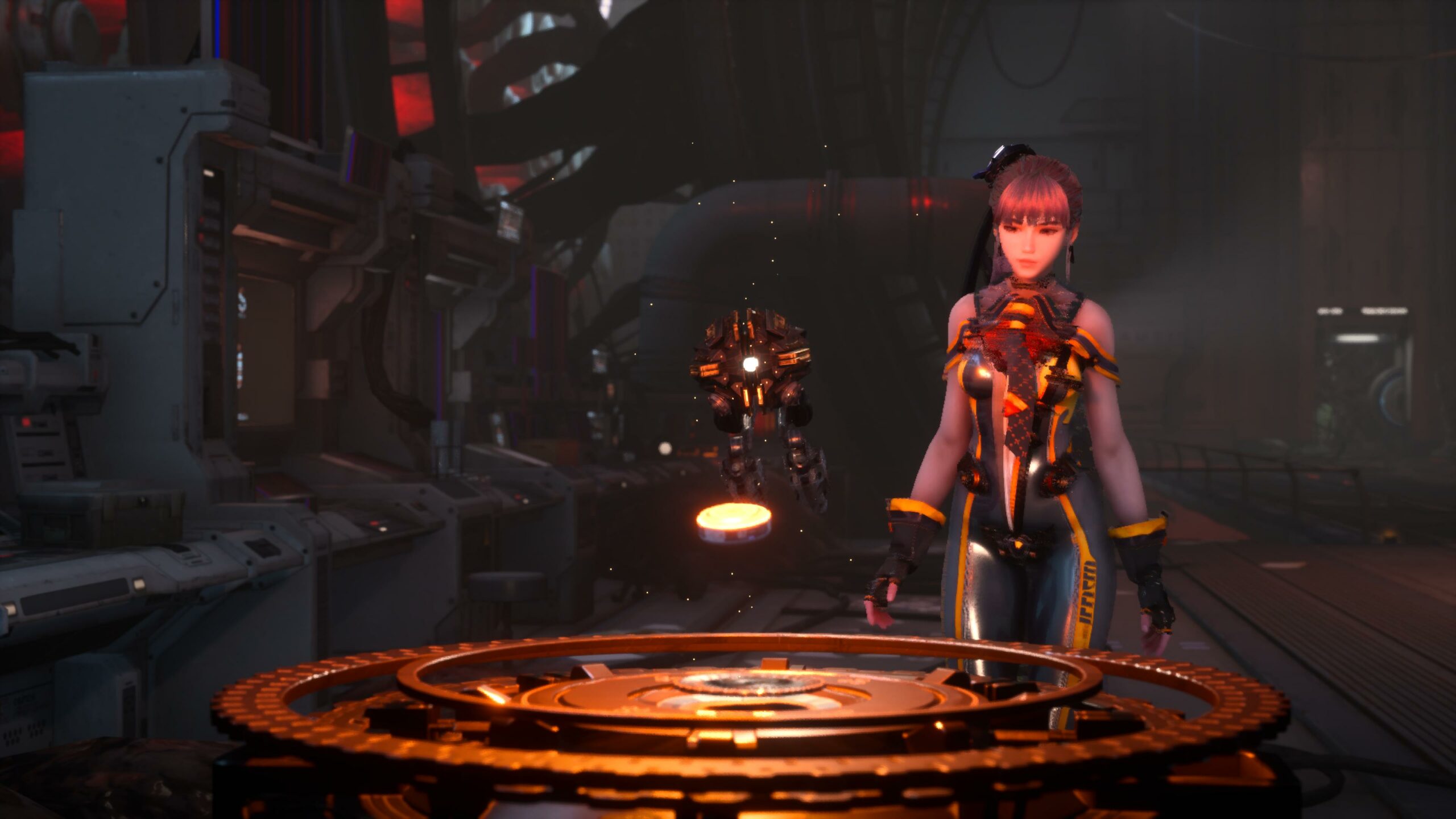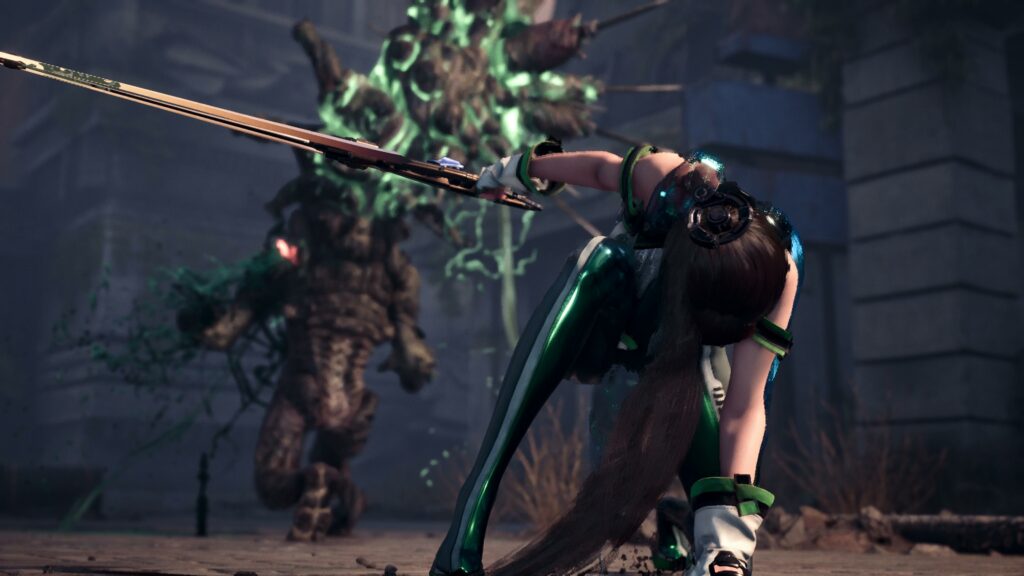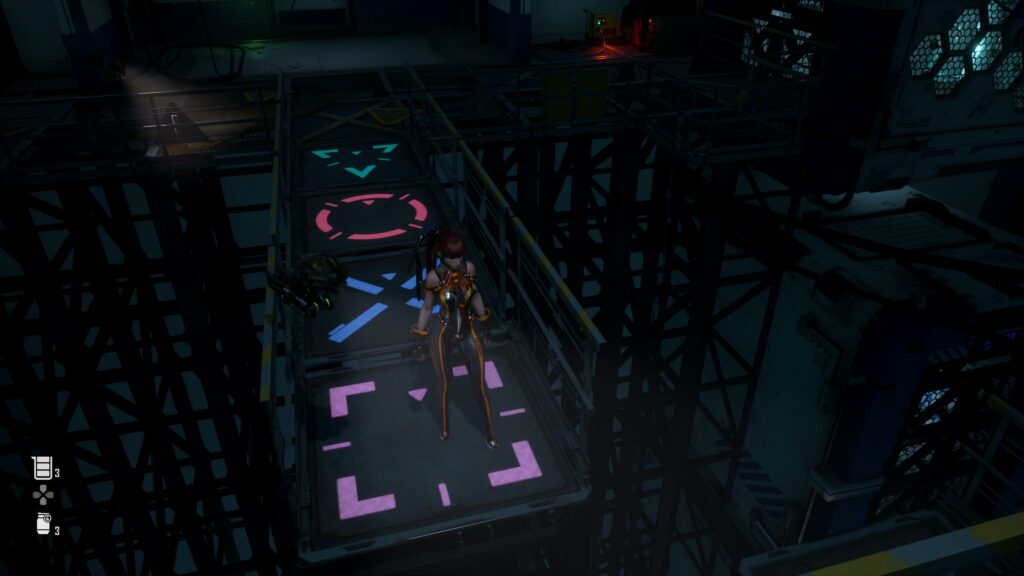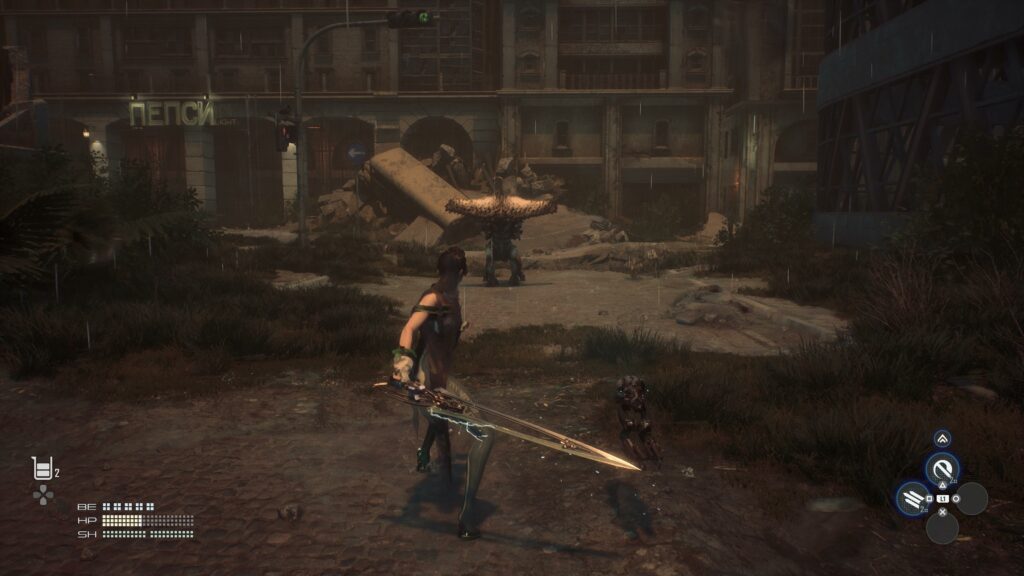You'll love it if:
- Ψάχνεις για ένα action game με γρήγορο και rewarding combat
- Λατρεύεις το post-apocalyptic sci-fi vibe
- Fanservice is king για εσένα
Not for you if:
- Δεν τρελαίνεσαι για over-the-top sci-fi ιστορίες
Stellar Blade was definitely not one of the games I expected to love so much this year. Mainly because before February’s State of Play, no one knew if this particular game would ever be released. We were first introduced to it as “Project EVE” in 2021, but between then and the release a lot of things have changed – first and foremost, the title.
The project in question comes from the Korean ShiftUp and is the first full console game of this company. In Korea, ShiftUp is known for its questionable mobile games.
As is evident, Stellar Blade is deeply inspired by NieR: Automata, a landmark title for the previous generation of consoles. As Hyung-Tae Kim, creative director of Stellar Blade, recently told IGN Japan, it was heavily influenced by the creations of Yoko Taro, creator of the NieR series. However, Stellar Blade is in no way a “bad copy” of NieR Automata. It draws inspiration in terms of setting and world-building techniques, but in terms of gameplay, Stellar Blade does a few things much better than NieR Automata was able to do.
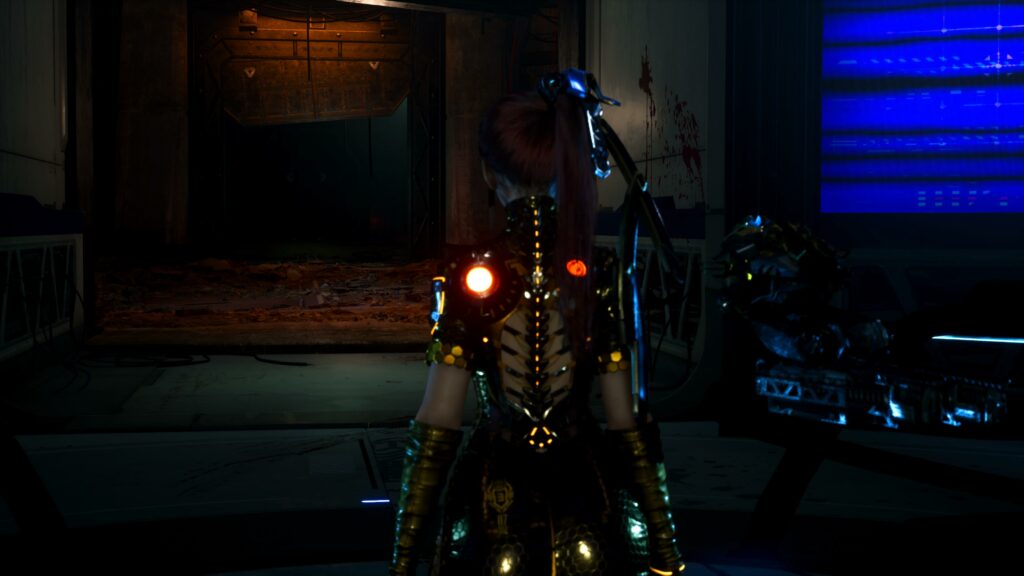
TL;DR
Stellar Blade is the surprise of the year. It’s not afraid to experiment and that’s why I loved it. With a compelling plot, immersive graphics and a huge variety of gameplay, you never know what’s around the next corner. “Let’s play until the next checkpoint” and you’ll end up turning off the console at 4am like I did.
This article is a pre-release review of Stellar Blade. All images in this article are screenshots from our PlayStation 5 playthrough.
Stellar Blade: Story
Stellar Blade is a story-driven action game set in a post-apocalyptic world, with a strong modernized steampunk aesthetic. The setting is interesting enough on its own, but thanks to ShiftUp’s excellent world-building, the plot manages to draw you in deeper and deeper. Stellar Blade’s story is, at its core, a mystery story. A battle android not only tries to solve the problems it detects around it, but it searches for what it was that created this sad situation.
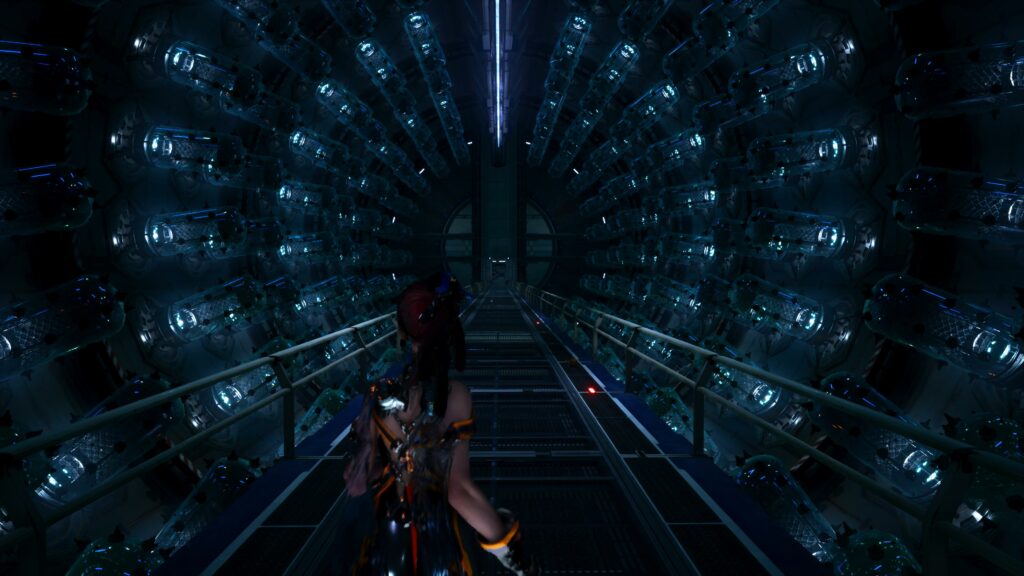
The following plot summary is limited to the first 3 hours of gameplay – practically no spoilers.
Building on ruins
Stellar Blade tells the story of Eve, an Angel – a member of the 7th Airborne Squad – who goes to Earth on a mission to eradicate the Naytibas, entities hostile to humans and their creations that have taken over the planet, forcing humans to take refuge in a famous base (The Colony) to survive.
Most of the 7th Airborne Squad dies before they even reach Earth, as their starship is attacked while in orbit above the planet. The only survivors are Eve, and the Squad leader, Tachy. The two of them are confronted by an Alpha Naytiba, a rare and very powerful boss. Tachy sacrifices herself to help Eve escape, who is rescued by Adam (see what they’re trying to do here?), who is an aircraft pilot, as well as one of the few humans still alive on Earth. Adam decides to accompany Eve on her mission, following her in his drone, offering her valuable support. Together, they discover another survivor from a previous airborne squad sent to Earth, Lily, who was the engineer of the 6th Airborne Squad.
The three of them go to Xion, a city built in the middle of a garbage dump where those humans and droids who have taken refuge on the now-ruined planet, to seek more information about the Alpha Naytibas. There, Eve meets Oscal, the “leader” of the city, who is connected (literally) to the mainframe of the city’s supercomputer. Oscal reveals to the party that in order to eliminate the danger of the Naytibas, they must kill Elder Naytiba, the leader of these creatures. So Eve, Adam and Lily set out on a dangerous mission: to kill as many Alpha Naytibas as it takes to find where the Elder is hiding while gathering enough materials to upgrade Xion as a thank-you for the townspeople’s help.
Pick your poison
Stellar Blade’s story contains many twists and turns, some of which can be seen from miles away due to foreshadowing, but there are also some that catch you completely off guard. Of course, it wouldn’t really be inspired by Yoko Taro’s work if we didn’t have multiple endings.
At the time of writing, we haven’t seen everything, but really this game isn’t afraid to try anything. It’s the opposite of ‘playing it safe’. Gotta love it.
Post-apocalyptic world building
The narrative in Stellar Blade has many facets. Eve is just a visitor on Earth, unaware of how many of the things she interacts with on her journey, work. The post-apocalyptic planet we see in Stellar Blade is very different from our own, with enough “familiar” aspects to keep us interested. Lily and Adam make the perfect side characters. They’re always accompanying Eve as a voice in her ear, making observations, filling in her thoughts, and explaining how the world she’s exploring works and why some things are as we see them. The lead trio is the perfect channel for the player to connect with the world she is exploring.
Then, much of the narrative is told through what you see around you rather than the main plot points. Stellar Blade makes you feel like Eve’s adventure is but a small part of the stories this world has to offer. The inhabitants of Xion and the Wastelands will continue to exist without you being there. At first, they see you as a threat, and are hesitant towards you. Yet, when you help them, the results are immediately apparent. By upgrading the town, you’ll immediately see more people on the streets, you’ll see more shops open, and recurring characters in side-quests who will remember that you helped them and want to reciprocate.
So even the side-quests make sense, beyond satisfying the completionist in all of us. It’s not just about the rewards, but the role that your participation in these short stories plays in completing the over-arching story.
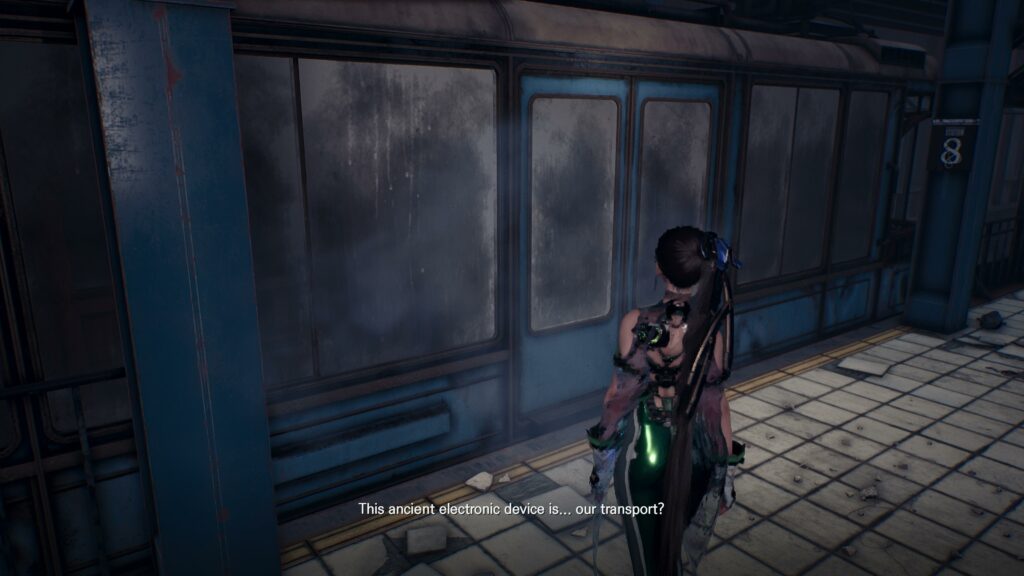

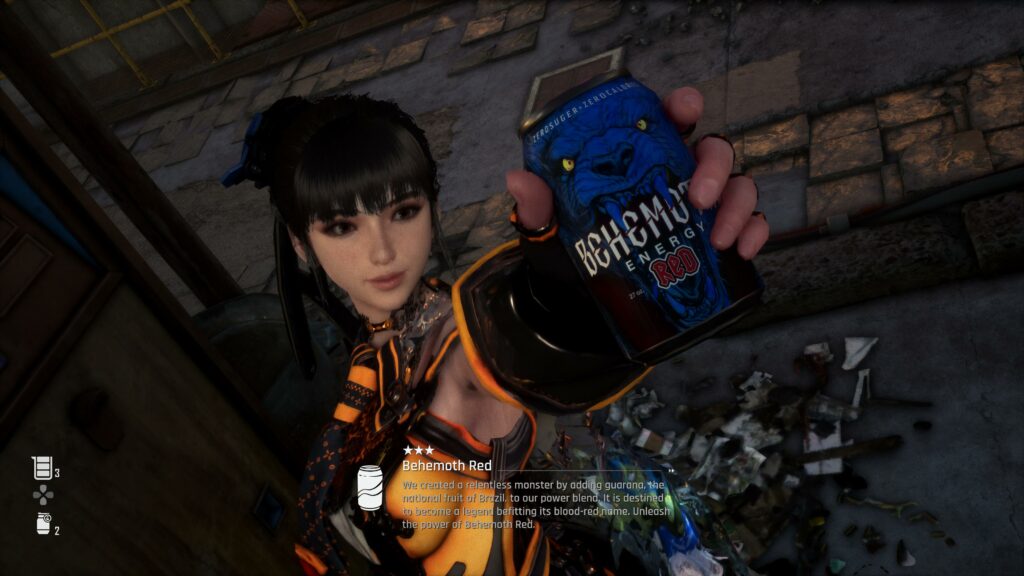
Stellar Blade: Gameplay
The plot may be very interesting and the visual presentation is excellent, but the gameplay is the part that really stood out for me in Stellar Blade. This is where ShiftUp shows what they can really bring to the game as a new studio and why they are worth keeping in mind from here on out.
Why reinvent the wheel when you can ride the wave?
The best way I can think of to describe Stellar Blade’s gameplay is that it’s a great mashup, a methodical mix of good ideas. Instead of trying to reinvent the wheel, it takes gameplay elements and mechanics that have been proven to work from other titles, and modifies them to fit the world of Stellar Blade. All gameplay mechanics have their place within the plot, many are even locked behind the story progression.
The most important thing, in my opinion, is that there are no unnecessary mechanics. ShiftUp makes sure you see and get the chance to use everything Stellar Blade has to offer. At certain levels, the game restricts you from using certain skills in order to push you to use the rest. Specifically: the combat in Stellar Blade is mostly melee, close-range combat. By level three, Eve’s blade stops working, so you’re forced to use the ranged arsenal, and at the same time completely change the way you deal with each encounter. To me, this is a hallmark of proper game design.
It’s these small choices that highlight how well-designed Stellar Blade is. In fact, the new elements it incorporates into the gameplay loop are very few. Its sources of inspiration are obvious because… it doesn’t try to hide them. The Dark Souls series inspires the parry system and camps, there’s an entire level – an ode to Dead Space, and dramatic over-the-top platforming sequences with quick-time events like Uncharted. And yet, these are choices that have been masterfully integrated into Stellar Blade’s core gameplay loop. Someone who isn’t looking to see the flaws and where all these disparate elements “come together” will probably never notice them. Unlike Rise of the Ronin, here the outside influences on the design have been fully assimilated.
Why go big when you can win by going small?
Το Stellar Blade είναι ένα game χτισμένο με την φιλοσοφία των levels. Κάθε level είναι self-contained, ξεχωριστή εμπειρία. Μπορείς να ταξιδεύεις μπρος και πίσω ανάμεσα στα levels, και υπάρχουν τα λεγόμενα hub levels, που σε συνδέουν από το ένα mission level στο άλλο. Υπάρχει ακόμη και fast travel, αλλά σε καμία περίπτωση δεν βλέπουμε εδώ χαρακτηριστικά open world σχεδιασμού. Κι αυτό είναι καλό. Πιο πάνω έγραψα για το πόσο αξιομνημόνευτα μου φάνηκαν ορισμένα levels, κάτι το οποίο θα ήταν σχεδόν αδύνατο σε έναν open world.
I’d also like to explain a little bit about what an excellent mechanism the camps in Stellar Blade are. It’s something we’ve seen many times before, as bonfires in the Souls games, as meditation circles in the Jedi series. And yet, here is the concept, it’s actually more interesting. These are supply camps that were left behind by previous missions from The Colony. They are activated by using a special coin, which you can always find near the camps. Not all camps are the same, when you’re in the middle of exploration, rest camps just offer a checkpoint, a supply of healing items and a chance to unlock new skills, while supply camps, allow you to upgrade your weapons, make new uniforms and fast travel. The former are a chance to take a break after a series of tough battles, while the supply camps, allow you to get ready for what’s to come.
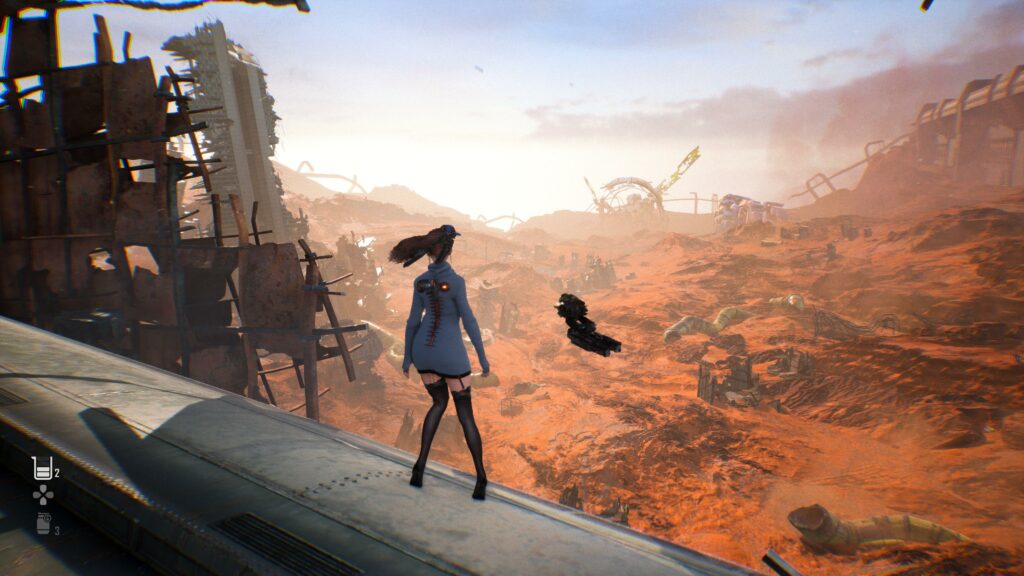
Don’t let them catch their breath
The combat in Stellar Blade is truly amazing. Fast, action-packed, and visually pleasing. You can play defensively, waiting for your opponent to make a mistake, and with an easy parry, find a gap in their defense. Enemies have defense meters that you can break with several parries, which allows you to make a powerful execution-type attack. At the same time, successful parries fill Eve with beta energy, a type of energy you can use to unleash powerful special attacks.
Alternatively, you can put yourself in the position of “hunter”, storming the monsters with attacks, taking them out before they can react. In my experience, this was the most successful strategy, as the enemies in Stellar Blade hit pretty hard, even on Normal difficulty. Like Eve, the monsters also use combo attacks, which, once initiated, are only interrupted by beta skills, and a full combo can very easily take Eve out of the fight.
Healing is also very limited. There is a limit to how many healing items Eve can carry on her, some of which are automatically replenished when you “rest” at a camp, similar to Jedi: Survivor. There’s plenty of equipment to choose from, but Eve’s weapons don’t change, only upgrade. You can upgrade Eve’s sword/hairgrip by collecting resources from the environment and combining them with a bunch of other upgrades like exospines, which can radically change your playstyle.
It should also be noted that playstyle changes are necessary in many places, due to the wide variety of enemies. From bosses to simple goons, there are so many different monsters to face, each with their own attack patterns and combos, that you are forced to adapt to.
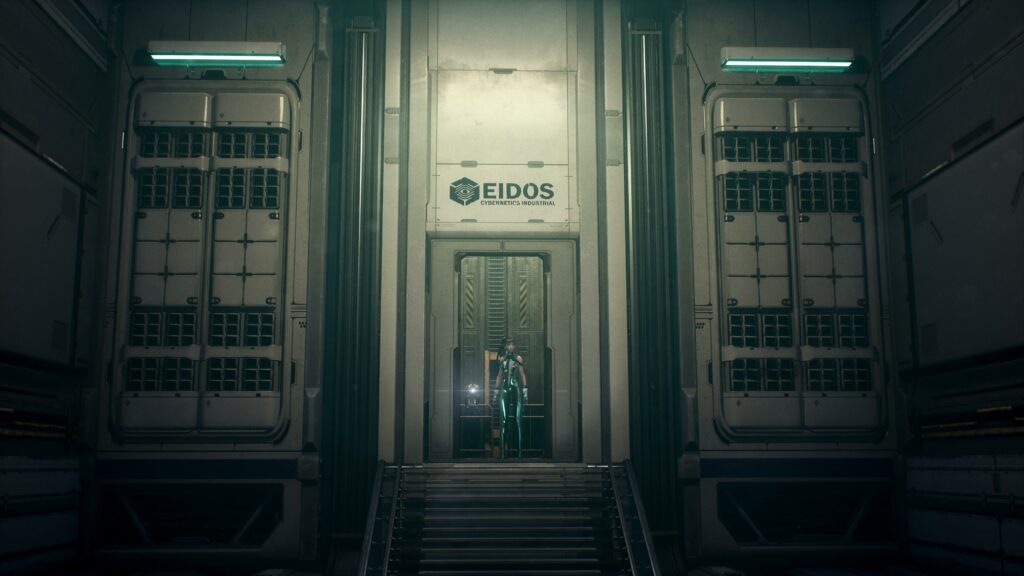
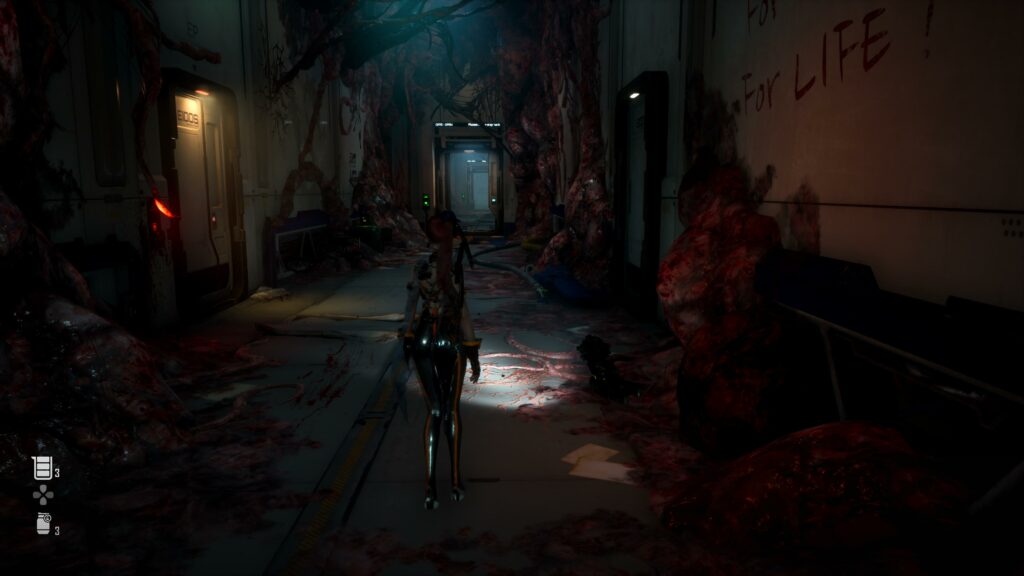
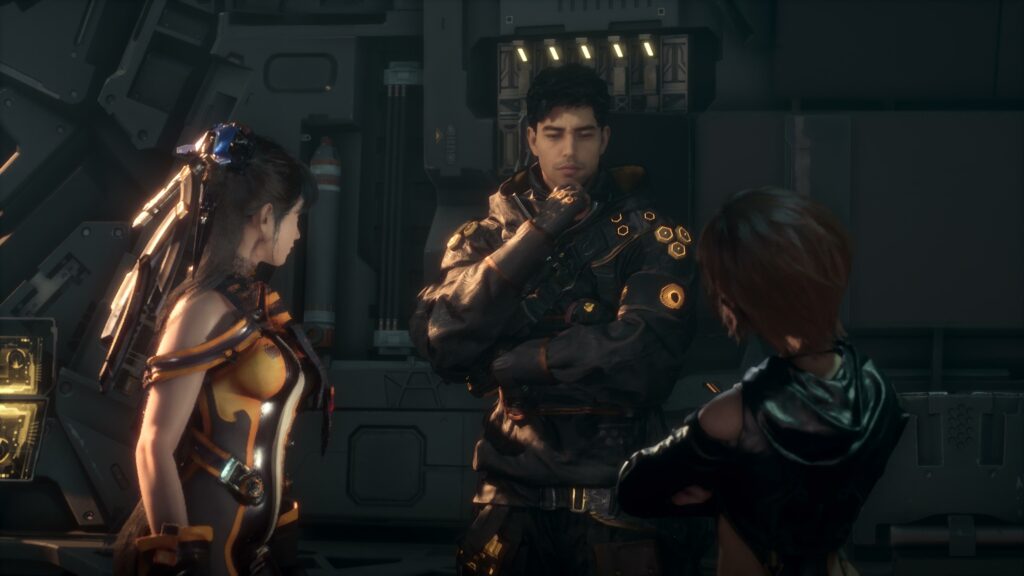
Stellar Blade: Presentation
Stellar Blade is truly a visually stunning game. It brilliantly combines cinematic scenes and fast-paced gameplay with incredibly solid performance, resulting in a rock solid experience for the PlayStation 5. The audio is excellent too, with the music really standing out.
A sci-fi extravaganza
While most people are concerned with the protagonist’s questionable looks and suits, I think few people have appreciated Stellar Blade’s excellent aesthetic. It captures the post-apocalyptic sci-fi vibe far better than NieR: Automata managed to do, while still giving you the same nostalgic feeling for a period of the world it transports you to that you neither lived through nor saw. Everything feels dilapidated, like the remnants of not only another time, but another, completely unknown civilisation. Each level is completely different: a city built into a canyon, an underground testing lab, an abandoned metro station. There’s so much to see, and again, just like the gameplay, because there’s so much variety, all the places are extremely memorable.
Stellar Blade tries to keep your hand on the controller for as long as possible. Yet even so, the cinematics and set pieces are truly remarkable. There are constant close-ups on Eve, which show off her human expressions and features – like freckles – that are in stark contrast to her nature as a robot. At the same time, the direction of the set pieces is great, with different angles highlighting the backgrounds, and expertly guiding the player’s eye to what they should be looking at. The action and gore are not lacking in the static scenes, with a plethora of finishers that Eve can perform, dismembering monsters in a thousand different ways.
The only negative thing I have to comment is the high mobility of the characters, especially Eve, in the static dialogue scenes. They are constantly moving, highlighting the questionable physics, which makes you wonder just what the developers are trying to convey. There’s also a huge degree of motion blur, which makes Stellar Blade look much better on a big TV screen than a gaming monitor. You can always turn down the motion blur, but that doesn’t definitively solve the problem.
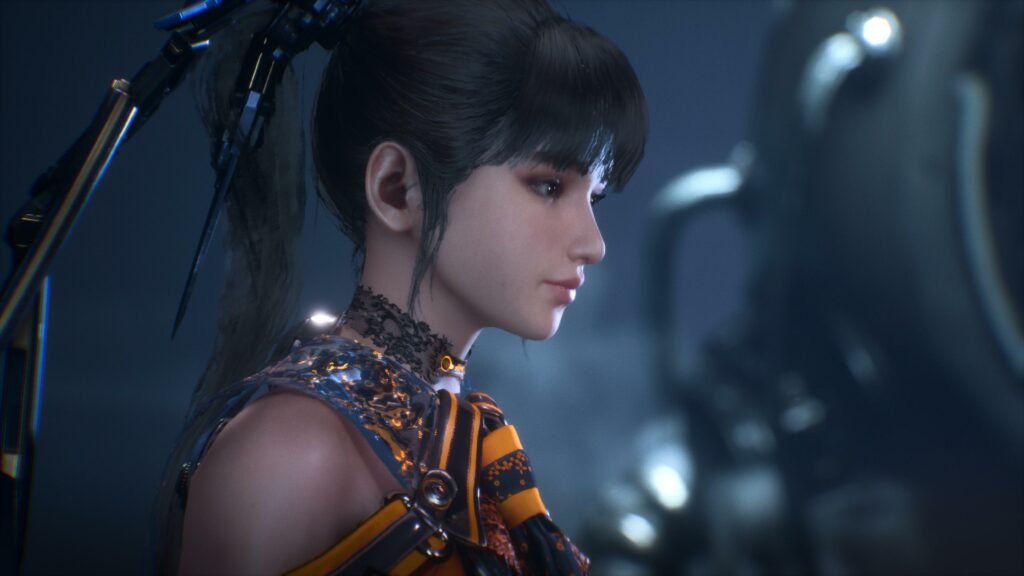
Stellar performance
Similarly, the performance was excellent. There are three graphics modes to choose from: Prioritize performance, graphics and balanced. Most of my playthrough was in balanced mode, which did a good job of keeping the framerate steady at 60fps 90% of the time. Minimal stutters, fast loading screens. Graphics mode was pretty rough though, with the game struggling to hit 30fps in the city of Xion. However, the Day 1 patch promises improved performance before release.
Iconic soundtrack
The music in this game is really enjoyable. It’s masterfully used to build tension in fights, and gives you that “oof” feeling when you take a break in the camps. One of the best features is the turntable in each camp that lets you change the music being played, allowing you to choose what your own adventure soundtrack will be.
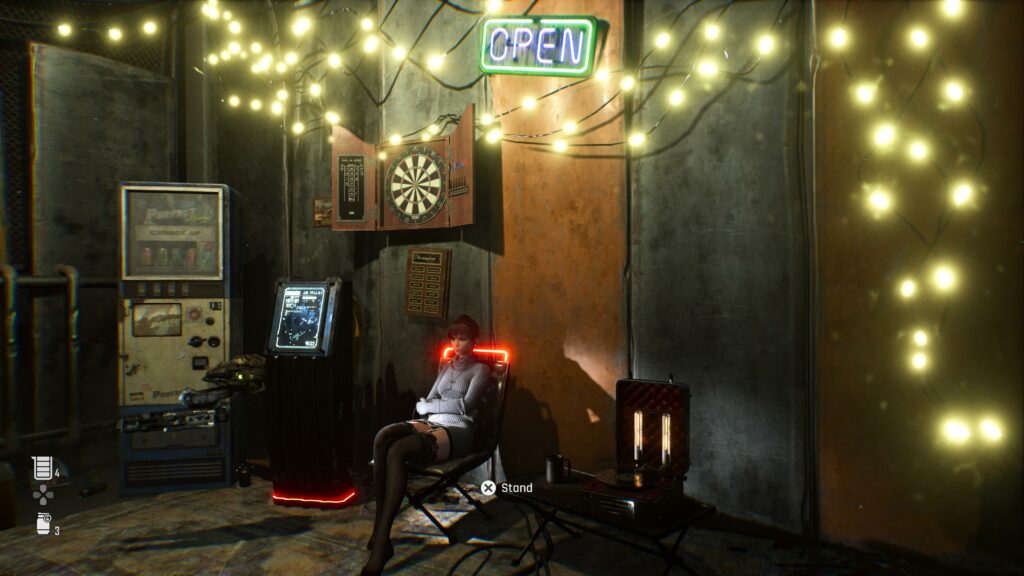
Stellar Blade: Conclusion
Stellar Blade caught us somewhat off guard. It’s a great story-driven action slasher from a relatively unknown developer. The plot is quite interesting, the sci-fi plot twists may not be for everyone, but the world ShiftUp is building will definitely win quite a few hearts. The gameplay reinvents itself in each level, putting the player in scenarios where they will be forced to use all the resources the game provides, making each area, and each story beat unique. The graphics and sound make up an awesome landscape, which sets an awesome vibe for this post-apocalyptic story.
Personally, I’m not a fan of excessive fan service. I understand who Stellar Blade’s audience is, and I understand why it’s there. However, this game would be treated as a much more “serious” release by the community. In my opinion, Stellar Blade is easily one of the notable releases of this year. Another great PlayStation 5 exclusive.
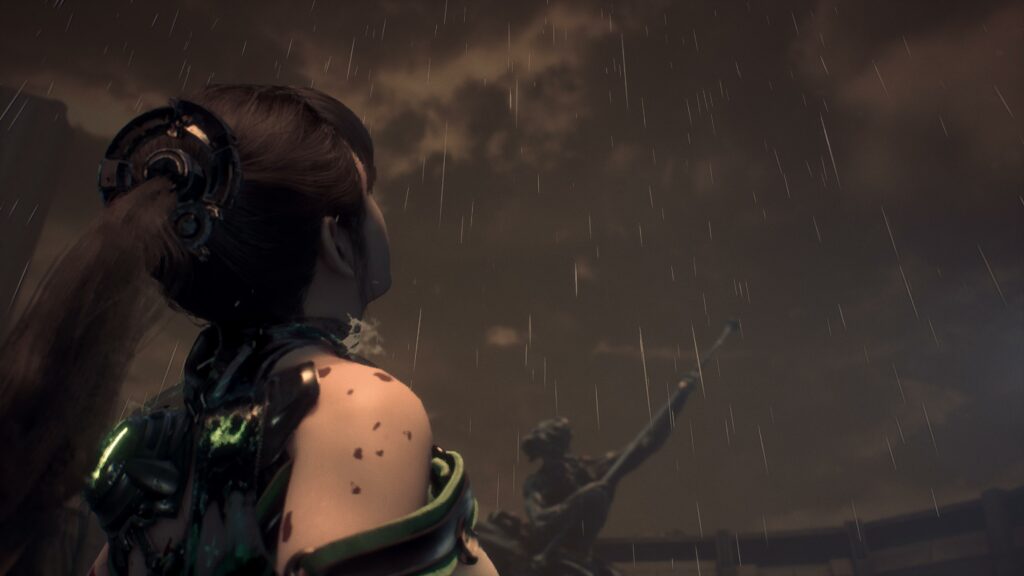
Stellar Blade will be released on April 26 for PlayStation 5.
Thanks to PlayStation Greece for the review key we used.
